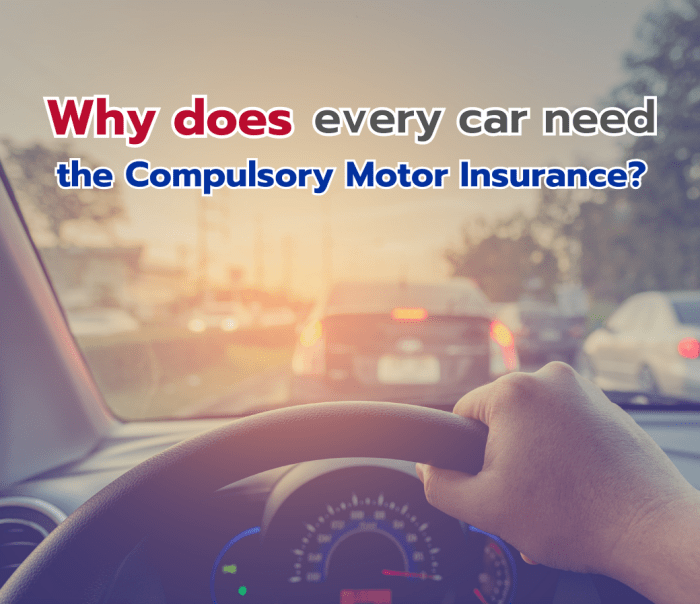Why You Should Consider Comprehensive Car Insurance for Older Cars in the U.S.
Why You Should Consider Comprehensive Car Insurance for Older Cars in the U.S.? It’s a question many older car owners grapple with. While liability-only insurance might seem cheaper, the potential costs of accidents involving older vehicles can quickly outweigh the savings. This article explores the financial, emotional, and legal reasons why comprehensive coverage is a smart choice for protecting your investment and peace of mind.
From unexpected mechanical failures to the higher likelihood of theft or vandalism, older cars face unique risks. Comprehensive insurance offers broader protection, covering damages not just from accidents you cause, but also from events like fire, hail, or even hitting a deer. We’ll delve into the specifics of coverage, compare costs, and help you navigate the process of finding affordable comprehensive insurance tailored to your needs.
Table of Contents
ToggleFinancial Implications of Accidents Involving Older Vehicles
Owning an older car can be economical, but accidents can quickly erase those savings. The financial risks associated with driving an older vehicle are significantly higher than with a newer one, particularly without comprehensive insurance. Understanding these risks is crucial for making informed decisions about your car insurance coverage.Repair costs for older cars can be surprisingly high, often exceeding the vehicle’s actual market value.
This means that even a seemingly minor accident could leave you facing substantial out-of-pocket expenses. Without comprehensive insurance, you’ll be responsible for covering these costs entirely. Liability insurance only covers damages you cause to other people or their property; it won’t cover repairs to your own vehicle.
Repair Costs Exceeding Vehicle Value, Why You Should Consider Comprehensive Car Insurance for Older Cars in the U.S.
The cost of repairing damage to an older car can easily surpass its worth. For example, a fender bender in an older vehicle might require expensive bodywork, especially if parts are difficult to find or need to be custom-made. Replacing a damaged engine or transmission in an older car can be incredibly costly, potentially reaching thousands of dollars.
If the repair bill exceeds the car’s value, it might be more economical to declare it a total loss, leaving you without a car and still owing money on the repairs. This situation highlights the significant financial protection that comprehensive insurance offers.
Financial Burden of Liability Claims Without Comprehensive Coverage
Even if you’re not at fault in an accident, you could still face significant financial burdens without comprehensive coverage. For example, if another driver hits your car and their insurance company deems the damage to be your fault, you could be responsible for the costs of repairs to their vehicle, regardless of who caused the accident. This is particularly true in cases where the other driver is uninsured or underinsured.
Comprehensive coverage can help protect you from these types of financial losses.
Scenarios Where Comprehensive Coverage Would Be Beneficial
Several scenarios demonstrate the value of comprehensive coverage for older cars. Consider these examples:A hailstorm damages your car’s paint and dents the hood. Repairing this damage could cost several hundred dollars, but comprehensive coverage would take care of it.A tree branch falls on your car during a storm, causing damage to the windshield and roof. Replacing a windshield and repairing roof damage can be expensive.
Comprehensive coverage would alleviate the financial burden.Someone vandalizes your car, causing significant damage to the paint, windows, or interior. Repairing vandalism damage can be costly. Comprehensive coverage would help cover these expenses.
Repair Cost Comparison: With and Without Comprehensive Insurance
Let’s illustrate the difference with a hypothetical example. Suppose a minor collision damages the bumper and fender of a 15-year-old car. Without comprehensive coverage, you might face a repair bill of $2,000 to $3,000. With comprehensive coverage (and a reasonable deductible), your out-of-pocket expense could be significantly lower, perhaps only your deductible amount, leaving the insurance company to cover the remaining costs.
The difference is substantial and clearly demonstrates the financial benefit of having comprehensive insurance.
Protecting your older car in the U.S. is crucial, especially with unexpected repairs. Comprehensive coverage helps cover those costs, whether it’s damage from a hailstorm or theft. For helpful resources and comparisons to make the best choice, check out AdminLurp AdminLurp for valuable insights. Ultimately, comprehensive insurance offers peace of mind knowing you’re financially protected against unforeseen events that can impact your older vehicle.
Coverage for Common Risks Faced by Older Cars
Older vehicles, while often more affordable to purchase, present unique challenges compared to newer models. Their age increases the likelihood of certain types of damage and incidents, making comprehensive insurance a more prudent choice than liability-only coverage. This section will detail the specific risks and how comprehensive insurance can provide crucial protection.Older cars are more susceptible to mechanical failures.
These failures can range from minor inconveniences like a dead battery to major breakdowns that require extensive repairs or even towing. Beyond mechanical issues, older cars are often more attractive targets for theft due to their lower replacement value and the potential for parts scavenging. Finally, their age makes them more vulnerable to damage from weather events or accidents.
Types of Damage Covered by Comprehensive Insurance
Comprehensive car insurance goes beyond the basic liability coverage, protecting you from a wider range of incidents. It typically covers damage caused by events such as fire, theft, vandalism, and collisions with animals. This means that if your older car is damaged in a fire, stolen, or vandalized, your comprehensive policy will help cover the costs of repair or replacement, subject to your deductible and policy limits.
Furthermore, damage from hail, flooding, or other weather-related events are often included under comprehensive coverage. It’s important to carefully review your policy to understand the specific inclusions and exclusions.
Limitations of Liability-Only Insurance for Older Cars
Liability-only insurance covers damage you cause to other people’s property or injuries you cause to others in an accident. However, it doesnot* cover damage to your own vehicle. For an older car, this limitation is significant. If your car is involved in an accident, even one that’s not your fault, liability-only insurance won’t pay for the repairs to your vehicle.
Considering the higher likelihood of mechanical failures and the generally lower value of older cars, the financial burden of repairs or replacement could be substantial without comprehensive coverage. Furthermore, if your car is stolen or damaged by fire or vandalism, you’d bear the full cost of repair or replacement.
Comparison of Liability-Only and Comprehensive Coverage
| Coverage Type | Damage to Your Vehicle | Damage to Other Vehicles | Other Covered Events |
|---|---|---|---|
| Liability-Only | Not Covered | Covered (up to policy limits) | None |
| Comprehensive | Covered (subject to deductible) | Covered (up to policy limits) | Fire, theft, vandalism, weather damage, animal collisions, etc. |
Peace of Mind and Reduced Stress
Owning an older car can already be a source of anxiety – unexpected repairs, potential breakdowns, and the general wear and tear are constant concerns. Adding the risk of an accident without adequate insurance only amplifies these worries. Comprehensive car insurance for older vehicles significantly mitigates this stress, offering a crucial safety net in potentially devastating circumstances.Comprehensive coverage goes beyond the basic liability insurance required in most states.
It provides financial protection for a wider range of incidents, including damage from collisions, fire, theft, vandalism, and even natural disasters like hailstorms. This broad coverage translates directly into a more peaceful and less stressful ownership experience. Knowing you’re financially protected in the event of an unforeseen accident or damage significantly reduces the emotional burden associated with such events.
Financial Security Reduces Anxiety
The emotional benefits of comprehensive car insurance are undeniable. The peace of mind that comes with knowing you won’t face crippling financial burdens after an accident is invaluable. Imagine the stress of a total loss on your older car – not only the loss of transportation but also the hefty repair bill or replacement cost. With comprehensive coverage, this financial burden is significantly lessened, allowing you to focus on recovery and getting back on your feet, rather than worrying about overwhelming debt.
This reduced financial stress translates directly into less overall anxiety and a greater sense of security.
A Narrative Example of Emotional Relief
Consider Sarah, a retiree who relied on her 15-year-old Honda Civic for errands and social engagements. One evening, a storm caused a large tree branch to fall onto her car, causing significant damage to the roof and windshield. Sarah was understandably upset, but her comprehensive insurance policy covered the repairs completely, relieving her of a significant financial burden and allowing her to focus on the emotional impact of the event rather than the financial fallout.
The quick and efficient claim process further reduced her stress, demonstrating the practical value of comprehensive coverage beyond just the financial aspects. The peace of mind provided by her insurance allowed her to navigate a difficult situation with significantly less stress and anxiety.
Factors Influencing Insurance Premiums for Older Cars
Several factors combine to determine the cost of comprehensive car insurance for older vehicles in the U.S. Understanding these factors can help you make informed decisions about your coverage and budget. These factors often interact, meaning a higher value in one area might offset a lower value in another. It’s a complex calculation, and it’s always best to get personalized quotes from multiple insurers.
Insurance companies assess risk when setting premiums. For older cars, this risk assessment considers a range of factors, from the car’s inherent characteristics to your driving record and location. The older a car is, the more likely it is to experience mechanical failures, increasing the likelihood of accidents and the cost of repairs. This directly impacts insurance premiums.
Vehicle Age, Make, and Model
The age of your vehicle is a primary determinant of your insurance premium. Older cars are generally more expensive to repair due to parts availability and labor costs. Classic or collectible cars might be an exception, commanding higher insurance premiums due to their value, even if they are older. The make and model also play a crucial role.
Repairing an older car after an accident can be costly, making comprehensive insurance a smart choice. Even minor damage can quickly add up, so protecting your investment is key. For those new to car insurance, check out A Guide to Choosing Car Insurance for First-Time Car Buyers in America for helpful tips. Ultimately, comprehensive coverage offers peace of mind knowing you’re protected against unexpected events, especially with a vehicle that’s more prone to wear and tear.
Some car makes and models have a history of higher repair costs or a greater propensity for accidents, leading to higher insurance premiums. For instance, a 10-year-old sports car will likely have a higher premium than a 10-year-old sedan of the same value, due to higher repair costs and a higher perceived risk profile.
Driving History and Location
Your driving history significantly influences your insurance premium. A clean driving record with no accidents or tickets will generally result in lower premiums, regardless of the vehicle’s age. Conversely, a history of accidents or traffic violations will likely lead to higher premiums. Your location also matters. Areas with higher rates of car theft or accidents typically have higher insurance premiums due to the increased risk.
For example, someone living in a densely populated urban area might pay more than someone living in a rural area, even if they drive the same older car.
Comparison of Comprehensive and Liability-Only Policies
Let’s consider a hypothetical example: a 15-year-old Honda Civic. A comprehensive policy covering collision, theft, and other damages would likely cost significantly more than a liability-only policy, which only covers damages you cause to others. While a liability-only policy might be cheaper in the short term, it leaves you financially vulnerable in case of an accident where your car is damaged or stolen.
The difference in premiums can vary widely depending on the factors mentioned above, but it is often substantial. For example, the comprehensive policy might cost $1000 annually, while a liability-only policy for the same car might cost $600 annually. This difference reflects the increased risk coverage offered by the comprehensive policy. However, the financial implications of not having comprehensive coverage in the event of an accident far outweigh this cost difference in many cases.
Finding Affordable Comprehensive Coverage
Securing comprehensive car insurance for an older vehicle doesn’t have to break the bank. By employing smart strategies and understanding your options, you can find affordable coverage that protects your investment and provides peace of mind. This involves careful comparison shopping, understanding policy details, and knowing where to look for discounts.Finding the right balance between cost and coverage is key.
Remember, while a lower premium might seem attractive, insufficient coverage could leave you financially vulnerable in the event of an accident. Therefore, prioritizing comprehensive coverage while actively seeking ways to reduce costs is crucial.
Strategies for Comparing Insurance Quotes
Comparing quotes from multiple insurance providers is essential to finding the best deal. Don’t just rely on a single quote; shop around and compare prices, coverage options, and policy details. Many online comparison tools simplify this process, allowing you to input your information once and receive quotes from several companies simultaneously. However, remember that these tools often only show basic plans.
Contacting insurers directly can reveal more tailored options and potential discounts. Take note of the specific coverage offered at each price point to ensure you’re comparing apples to apples.
Understanding Policy Details and Deductibles
Before committing to a policy, carefully review the fine print. Understand what’s covered, what’s excluded, and the limitations of your coverage. Pay close attention to your deductible – the amount you pay out-of-pocket before your insurance coverage kicks in. A higher deductible generally results in a lower premium, but it also means a larger upfront cost in case of a claim.
Consider your financial situation and risk tolerance when choosing a deductible. For example, a $1000 deductible might be manageable, while a $5000 deductible might be too risky. Also, understand the different types of coverage, such as collision, comprehensive, liability, and uninsured/underinsured motorist coverage, to ensure you have adequate protection.
Resources for Finding Affordable Car Insurance
Several resources can assist you in finding affordable car insurance. Online comparison websites, as mentioned before, provide a convenient starting point. These websites often allow you to filter results based on your needs and budget. Independent insurance agents can also be invaluable. They work with multiple insurance companies, giving you access to a broader range of options and potentially uncovering discounts you might miss otherwise.
Finally, consider contacting individual insurance companies directly. Many offer discounts for safe driving, bundling policies (home and auto), or being a long-term customer. Checking with your existing insurer about potential discounts for your older vehicle is also a worthwhile step. For example, some insurers offer discounts for vehicles that are older but well-maintained, or for those who have a clean driving record.
Protecting your older car with comprehensive insurance in the U.S. is smart, especially since repairs can be costly. Finding affordable coverage can be tricky, but if you have less-than-perfect credit, checking out resources like The Best Car Insurance for Drivers With Bad Credit in America is a great first step. This helps ensure you get the best rates possible, so you can get the comprehensive coverage your older vehicle needs without breaking the bank.
Legal and Regulatory Aspects of Car Insurance

Source: phitsanulok-hospital.com
Navigating the world of car insurance can be complex, especially when dealing with older vehicles. Understanding the legal requirements and potential consequences of inadequate coverage is crucial for responsible car ownership. This section Artikels the legal framework surrounding car insurance in the United States, highlighting variations between states and the implications of non-compliance.
State-Specific Insurance Requirements
Each US state mandates minimum levels of car insurance coverage, but these vary significantly. Some states require only liability coverage, protecting you financially if you cause an accident, while others mandate additional coverages like uninsured/underinsured motorist protection or personal injury protection (PIP). Failure to meet these minimum requirements can result in serious legal and financial penalties. For example, a driver in a state requiring liability coverage might face hefty fines and license suspension for causing an accident without adequate insurance.
In contrast, a driver in a state with more stringent requirements could face even more severe consequences. It’s vital to check your state’s Department of Motor Vehicles (DMV) website for specific details.
- Liability Coverage: This covers bodily injury and property damage you cause to others in an accident. The minimum amounts vary widely by state, ranging from $10,000 to well over $100,000 per person or accident. A policy with insufficient liability coverage could leave you personally responsible for significant costs if you’re at fault in a serious accident.
- Uninsured/Underinsured Motorist Coverage: This protects you if you’re involved in an accident caused by an uninsured or underinsured driver. It covers your medical bills and vehicle repairs, even if the at-fault driver cannot afford to pay.
- Personal Injury Protection (PIP): This coverage pays for your medical expenses and lost wages, regardless of who is at fault in the accident. It’s often mandatory in “no-fault” insurance states.
- Collision Coverage: This covers damage to your vehicle in an accident, regardless of fault. This is optional but highly recommended for older cars, as repairs can be costly.
- Comprehensive Coverage: This covers damage to your vehicle from non-collision events, such as theft, vandalism, or hail damage. This too is optional but recommended for older cars to protect against various risks.
Minimum Coverage Levels and Their Limitations
Minimum insurance requirements are designed to provide a basic level of financial protection. However, these minimums may be insufficient to cover the costs associated with a serious accident, especially considering potential medical expenses, lost wages, and vehicle repairs. The limitations of minimum coverage are particularly relevant for older cars, as repair costs might exceed the minimum liability limits in many states.
For example, if your minimum liability coverage is $25,000 and you cause an accident resulting in $50,000 in medical bills for the other party, you would be personally liable for the remaining $25,000.
Consequences of Driving Without Adequate Insurance
Driving without the minimum required insurance coverage can lead to a range of serious consequences, including:
- Fines and penalties: These can be substantial, varying by state and the severity of the offense.
- License suspension or revocation: This can prevent you from legally driving until you obtain the required insurance.
- Impoundment of your vehicle: Your car may be towed and impounded until proof of insurance is provided.
- Difficulty renewing your license: It can be challenging to renew your driver’s license until you’ve met the state’s insurance requirements.
- Legal liability: If you cause an accident without adequate insurance, you could face lawsuits and be held personally responsible for all damages.
Comparison with Other Insurance Options
Choosing the right car insurance for an older vehicle involves understanding the different types of coverage available and how they compare. Comprehensive insurance offers the broadest protection, but it’s not always the most economical option. Let’s examine alternatives and determine which might be the best fit for your specific needs and budget.
Several insurance options exist, each offering a different level of protection and cost. Understanding these differences is crucial for making an informed decision. The key is to balance the level of risk you’re willing to accept with the cost of insurance.
Liability-Only Insurance
Liability-only insurance is the most basic type of car insurance. It covers damages you cause to other people’s property or injuries you inflict on others in an accident, but it doesn’t cover damage to your own vehicle. This is the minimum insurance requirement in most U.S. states. While significantly cheaper than comprehensive insurance, it leaves you responsible for all repair or replacement costs to your older car following an accident, even if the accident wasn’t your fault.
This can be a considerable financial burden, especially with an older vehicle that may be more expensive to repair than it’s worth.
Collision Insurance
Collision insurance covers damage to your car resulting from a collision with another vehicle or object, regardless of fault. While it protects your vehicle, it’s usually more expensive than liability-only insurance. For older cars, the cost of collision coverage might be disproportionate to the vehicle’s actual cash value, making it less financially appealing. For example, if your car is worth $2,000 and the collision repair costs $3,000, you might only receive $2,000 from the insurance company, leaving you with a significant out-of-pocket expense.
Comprehensive Insurance vs. Other Options
Comprehensive insurance provides the most extensive coverage, including collision, fire, theft, vandalism, and other non-collision events. While more expensive than liability-only or collision-only policies, it offers peace of mind and protects against a wider range of risks, particularly valuable for older cars that are more susceptible to mechanical failures and are less likely to be worth the cost of significant repairs.
However, if your older car has low market value, the cost of comprehensive coverage might not justify the added expense.
Comparison Table
| Insurance Type | Coverage | Cost |
|---|---|---|
| Liability-Only | Damages you cause to others | Lowest |
| Collision | Damage to your car in a collision | Medium |
| Comprehensive | Collision, theft, fire, vandalism, etc. | Highest |
Specific Examples of Comprehensive Coverage in Action
Comprehensive car insurance, while often perceived as an unnecessary expense, especially for older vehicles, can offer significant financial protection. The following scenarios highlight the critical role comprehensive coverage plays in mitigating unexpected costs associated with owning an older car. Each example illustrates a situation where a policyholder benefited significantly from having this type of coverage.
Scenario 1: Hailstorm Damage
A 1998 Honda Civic owner in Colorado experienced significant hail damage during a severe summer storm. The hail pummeled the car’s hood, roof, and windshield, causing thousands of dollars in damage. The cost of repairs, including replacing the damaged windshield and repairing the dents and dings, was estimated at $4,500. Because the owner had comprehensive coverage, their insurance company covered the entire cost of the repairs, minus a small deductible of $500. The claim process involved filing a report with the insurance company, providing photos of the damage, and taking the car to an approved repair shop. The repair was completed within a week, and the owner only paid their deductible.
Scenario 2: Tree Branch Damage
A 1970s Ford Mustang owner in a rural area awoke one morning to find a large tree branch had fallen onto their car during a storm, causing significant damage to the car’s roof and trunk. The damage included a crushed roof panel and a severely dented trunk lid. Repair estimates ranged from $3,000 to $4,000, depending on the availability of original parts. With comprehensive coverage, the owner filed a claim, providing photos and a police report (as the damage was caused by an act of nature). The insurance company covered the cost of repairs, again after the owner paid their deductible ($250). The process took slightly longer due to sourcing original parts, but the repair was ultimately completed successfully.
Scenario 3: Vandalism
An owner of a classic 1967 Chevrolet Camaro in a city experienced vandalism. Unknown individuals keyed the car’s side panels, causing deep scratches and requiring extensive repainting. The cost to repair the damage and restore the original paint job was estimated at $2,800. The owner, who had comprehensive coverage, filed a police report and then contacted their insurance company. They provided photos of the damage and the police report. The insurance company approved the claim, and the owner was able to have the car professionally repaired, again after paying their deductible of $300. The repair process took several weeks due to the need for specialized paint matching.
The Long-Term Value Proposition of Comprehensive Insurance: Why You Should Consider Comprehensive Car Insurance For Older Cars In The U.S.
Protecting your older car with comprehensive insurance isn’t just about covering immediate costs; it’s a strategic investment that safeguards your finances and provides peace of mind over the long term. The unexpected nature of accidents and damage, coupled with the rising costs of repairs, makes comprehensive coverage a wise choice, potentially saving you significant money in the long run.Comprehensive insurance protects against a wide range of unforeseen events beyond basic collision coverage.
This includes damage from hail, fire, theft, vandalism, and even acts of nature like floods or falling trees. These events can easily result in thousands of dollars in repair bills or even a total loss, a financial burden that can be significantly mitigated with the right insurance policy.
Potential Long-Term Cost Savings
The cost of repairing or replacing older vehicles can be surprisingly high. Parts might be difficult to find, and labor costs can quickly escalate. Without comprehensive coverage, a single incident – a tree falling on your car during a storm, for example – could easily exceed the vehicle’s actual cash value. Comprehensive insurance helps you avoid this catastrophic financial hit, potentially saving you thousands of dollars compared to paying out-of-pocket.
This is particularly relevant for older cars, where the repair costs can quickly outweigh the vehicle’s worth.
Hypothetical Scenario Illustrating Long-Term Value
Imagine you own a 10-year-old sedan valued at $5,000. A severe hailstorm damages the car’s roof and hood, requiring extensive repairs. A repair shop estimates the cost at $4,000. Without comprehensive coverage, you would be responsible for this entire amount, potentially forcing you to either pay a significant sum or scrap the car altogether. With comprehensive coverage, however, your insurance company would likely cover the majority of the repair costs, leaving you with a minimal out-of-pocket expense (perhaps your deductible).
Protecting your older car with comprehensive insurance makes financial sense, especially considering unexpected repairs. While premiums might seem higher, the peace of mind is invaluable. Finding affordable coverage is key, and if you’re a young driver, check out this guide on How to Find the Most Affordable Car Insurance for Young Drivers in the U.S. for tips.
Ultimately, comprehensive coverage for older vehicles helps prevent significant out-of-pocket expenses from accidents or damage.
This protects your investment and allows you to keep a reliable vehicle. Over the life of the car, the cumulative savings from avoiding such large unexpected expenses could significantly outweigh the cost of the premiums.
Last Recap
Ultimately, deciding whether or not to get comprehensive insurance for your older car is a personal financial decision. However, weighing the potential costs of repairs against the relatively modest premiums for comprehensive coverage often reveals a compelling case for enhanced protection. The peace of mind offered, along with the financial security it provides in the face of unexpected events, makes it a worthwhile investment for many older car owners in the U.S.
By understanding the risks and exploring your options, you can make an informed choice that best suits your circumstances.
Key Questions Answered
What is the difference between liability and comprehensive car insurance?
Liability insurance covers damages you cause to others’ property or injuries you inflict on others. Comprehensive insurance covers damages to your own vehicle from events like theft, fire, or hail, regardless of fault.
How does my driving record affect my insurance premiums?
A clean driving record usually leads to lower premiums. Accidents and traffic violations can significantly increase your rates.
Can I get comprehensive coverage for a car that’s been in an accident before?
Yes, but it might be more expensive, and the insurer may have specific requirements or exclusions.
Where can I find affordable comprehensive car insurance quotes?
Use online comparison websites, contact multiple insurance providers directly, and consider adjusting your deductible to find a balance between cost and coverage.



